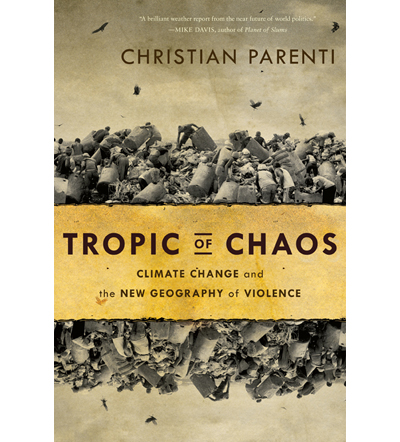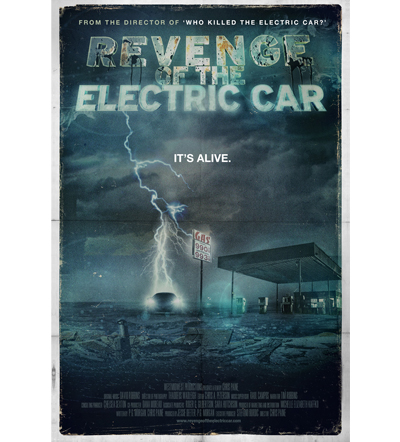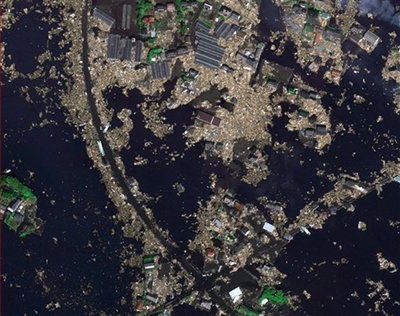
A Star Is Found © AMNH\ Ben Oppenheimer, Douglas Brenner

A paintbrush, an easel, a canvas, some paint. It used to be that works of art were created using a no frills set of materials like that, with maybe a color palette or a beret thrown in for good measure. While we’re far removed from the heyday of the French Impressionists, it’s likely that even the most forward-thinking of contemporary artists working with the most advanced tools of the trade wouldn’t know how to operate a telescopic coronagraph. But that’s exactly what was used by researchers in the American Museum of Natural History’s Department of Astrophysics to capture the spectacular image of an unknown star in the Big Dipper for an out-of-this-world work of art.
Titled “A Star Is Found,” and bearing resemblance to some menacing aquatic invertebrate or an experiment with green gelatin gone wrong, the image was never meant to hang on the walls of a gallery. Rather, it is an accidental masterpiece created in the pursuit of scientific research. A new star was discovered, and in the process, so was an unexpected thing of beauty – or something close to beauty, anyway. For the new exhibit “Picturing Science,” the museum’s curators have assembled a collection of spectacular prints that were produced with the same basic approach.
(more…)

Jacket design by Ariana Abud, Jacket image from Panos Pictures

While much of the present concern over climate change has more to do with rises in temperatures and sea levels, could it be that one of the major consequences of a warming planet will end up being a rise in the occurrence of armed conflicts? That’s the scenario proposed in Tropic of Chaos, by the writer Christian Parenti. The recently published book warns convincingly of a “catastrophic convergence” in which long-term political mismanagement and instability collide with deep-seated poverty, along with the added threat of climate shocks in cases where each problem intensifies the magnitude of the next. And what’s more, the convergence is already taking place. If devastating cycles of flooding and drought weren’t reason enough to worry about our climate systems, there’s also the resulting violence that might go with them.
It’s an interesting thesis from a journalist who has spent more time covering war zones than climate zones. But as Parenti explains, his travels through the parts of the world most rife with conflict led him to observe that a common factor was contributing to the problems in each of them. He noticed that unpredictable changes in weather patterns were putting populations at risk of falling into the trap of poverty and of then fighting over the limited resources that remained. The isolated wars that he thought he was witnessing were but minor skirmishes in a greater war taking shape on a global scale.
(more…)

Image courtesy of Roadside Attractions

For his previous documentary, 2009’s “Man on Wire,” James Marsh won an Oscar. That film told the story of Philippe Petit’s death-defying walk across a tightrope stretched between the towers of the World Trade Center. Now comes the director’s new release, “Project Nim,” which revisits the 1970s animal cognition experiment headed by Columbia University professor Herbert Terrace that attempted to teach sign language to a chimpanzee. That chimp, whose name was Nim, happened to be born the same year as the opening of the Trade Center, and as Marsh’s engaging and ultimately poignant film makes clear, the emotional life of one of our fellow primates can be as delicate as a high-wire balancing act.
The director spoke to PLANET about communication, evolution, and other monkey business ahead of “Project Nim’s” release:
(more…)

All images are courtesy of WestMidWest Productions

Not all summer blockbuster sequels are created equally. One of the most anticipated popcorn films this season happens to be a low-budget documentary. It has no special effects, unless you count driving to work without a drop of gasoline, and the only superheroes to be found are the ones tinkering in garages or design labs. Thankfully, nothing explodes in “Revenge of the Electric Car” though the movie arrives in theaters just as an electric-powered boom may at long last be upon us.
The film’s director, Chris Paine tells PLANET that six years after revealing the story of General Motors’s decision to recall the EV1 in the whodunit “Who Killed the Electric Car?” he welcomed the chance to chronicle the auto industry’s redemptive change of heart regarding the electric vehicle.
“I saw this as a rare opportunity as a storyteller to chart a big reversal in an industry where they went from actively trying to kill it to reviving it and even championing it,” the director says, speaking of the variety of cars that are charged overnight through a wall outlet. The long-term prognosis for these electrics looks a lot better now than it did in 2005 at the time of the first film’s release. That’s thanks largely to the changing conditions that drivers are facing, all of which point to the need for an alternative to the gas-powered vehicle.
(more…)


The Japanese comics known as manga can be repurposed in any number of ways. From Yoshihiro Tatsumi’s emotive everyday characters to Naoko Takeuchi’s “magical girl” super-heroines, there is seemingly endless variety in the current offerings of the country’s illustrated tradition. Rarely, though, does the form break so completely from the conventions of plot, structure, and characterization as in the work of Yuichi Yokoyama. Instead, the celebrated artist tends to focus on form itself.
In the brand new English translation of his latest graphic novel Garden, published by PictureBox, Yokoyama constructs a fantasyland of geometric shapes and mechanized systems that bring to mind what might result if a Conceptual sculptor in the mold of Claes Oldenburg was hired to design a children’s playscape. Yokoyama’s garden abandons shrubs and flowers in favor of materials evoking modern industries. He fills the pages with disassembled airplanes and stacks of boats; conical mountains of paper and buildings made from cloth.
Odd it may be, but what the artist seems to be drawing on these pages is an equivalence between the products of nature that would occupy a more Edenic garden and the machines that have come to inform contemporary living. It’s a connection both in design and mystique. Specimens from either group can appear to operate independently, managed by interior forces which make them all the more remarkable to those lacking knowledge of their inner workings.
(more…)

High Tech High by Jim Brady, courtesy of Studio E Architects

A weak economy was supposed to have curtailed sustainable building practices. The lack of green in developers’ wallets was expected to cause a scaling down in the greenness of their designs. Yet, while efficient building practices haven’t been immune to the recession-borne downturn of recent years in the overall construction industry, the American Institute of Architects was still able to find a variety of ambitious new structures to fill its annual list of the top ten green projects.
For the 15th year, the AIA’s Committee on the Environment has surveyed the latest work submitted by some of the country’s finest architects and agreed upon the most outstanding new creations, taking into account factors such as land use, construction materials, and the integration of energy-reducing features. Here now (listed alphabetically by project) is an overview of 2011’s environmental honor roll.
(more…)

Brooklyn Grange, New York, from My Green City, Copyright: Gestalten, 2011

This Earth Day, after a year that has seen an unprecedented oil spill, devastating natural disasters, and an ongoing nuclear crisis, it’s a good time for some positive news about the environment. Those looking to counterbalance the fatalistic stories that have dominated the headlines with a few reasons to feel more optimistic about the future sustainability of life on the planet will be happy to find scores of promising items in
My Green City: Back to Nature with Attitude and Style, edited by Robert Klanten, Sven Ehmann, and Kitty Bolhöfer.
The newly published book is an illustrated guide to a number of the design trends that are guiding the global movement toward the greening of our urban spaces. Individually, none of the small developments will likely make the lead story on the evening news. But like stubborn weeds peaking through the cracks in the pavement, they are slowly gaining ground in cities everywhere and supplying evidence that the metropolitan centers of the future will be more unrefined and far wilder than the stark grids of steel and cement previously envisioned.
(more…)


For three decades, Peter Jay Brown has been regularly leaving his family and steady jobs in television production behind to take extended tours aboard the fleet of ships owned by the Sea Shepherd Conservation Society. The activist marine life preservation group often goes to extreme lengths to carry out its mission, employing some highly confrontational practices like sinking or ramming into vessels thought to be impairing the future survival of seals, whales, and other inhabitants of the ocean. Frequently wearing the title of first mate and nearly always armed with a camera, the most dangerous weapon of all, Brown has stood at the helm as a volunteer beside the society’s founder and the fleet’s captain, Paul Watson, on missions to Alaska, Antarctica, the Galápagos, and practically everywhere else, whether the objective was to prevent poaching in marine sanctuaries or the use of drift nets by large scale fishing operations.
(more…)

When the Killing's Done cover image/ courtesy: Viking

In his latest novel, T. Coraghessan Boyle considers the real life story of the National Park Service’s systematic slaughter of wild animals. To be clear, the species in question at the center of When the Killing’s Done are the invasive rats and non-native pigs whose presence has disrupted the ecological balance on Anacapa and Santa Cruz, two of the Channel Islands off the Southern Californian coast. Getting rid of these pests, according to the argument presented by the Park Service, would enable a return to the conditions as nature intended, before the arrival of sheep herders and shipwrecked gold prospectors introduced the undesirable creatures in the first place and set off a chain of habitat-altering ramifications.
Using this highly contentious campaign to frame the story, Boyle constructs a fictional tale of characters touched by the arguments over which lives are worth saving and just when it is reasonable to play God. Alma Boyd Takesue, the good-intentioned Park Service biologist who supports the extermination process, is pitted against the hotheaded and dreadlocked animal rights activist Dave LaJoy and his band of perfervid followers. The battle lines are drawn, the passions are intense, and nearly everyone, no matter their position on the killing, is out for blood.
Animals verses animals, humans taking on animals, and finally, humans up against humans – the conflicts presented here make this only the latest in Boyle’s literary explorations of the complexities present where fights over nature occur.
(more…)

In this picture publicly provided by the German aerospace DLR and their crisis center on Monday March 14, 2011 the Japanese city of Sendai is pictured on Saturday March 12, 2011 after the earthquake and the following tsunami. (AP Photo/DLR ZKI)

Since the strike of an 8.9 magnitude earthquake east of Sendai, Japan at 2:46 PM local time last Friday, the rest of the world has been watching in horror as one catastrophe has unfolded upon another. A devastating tsunami striking Japan’s northeastern coast, then growing concerns about the possible release of radioactivity from six nuclear reactors whose cooling systems were disrupted by the quake, all adding up to the worst destruction the country has seen in 65 years. The vast extent of the damage has revealed itself as rescuers move into the affected areas. Estimates early in the week place the number of casualties above 10,000, with 500,000 said to have been displaced.
The crisis continues to play out, with the nuclear failure possibly the most serious front of all, but mercifully, humanitarian efforts are already under way in some areas. To supplement Japan’s own considerable response actions, the United States quickly deployed naval rescue vessels to the Japanese coast, including the USS Ronald Regan, carrying relief supplies and manpower in an effort that’s being called “Operation Tomodachi,” which is Japanese for “friendship.” The U.S. Agency for International Development (USAID) has sent search and rescue teams and disaster response units of its own.
(more…)





 Facebook
Facebook Permalink
Permalink Digg
Digg Reddit
Reddit LinkedIn
LinkedIn StumbleUpon
StumbleUpon Tumblr
Tumblr












